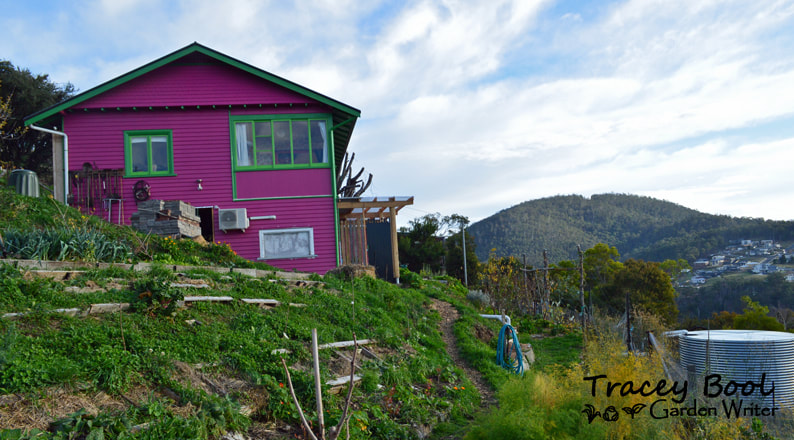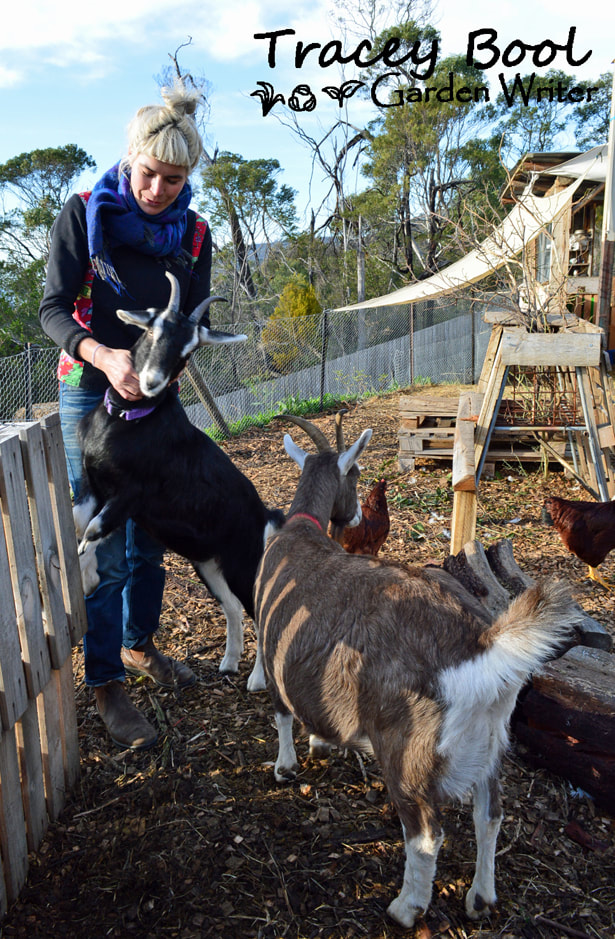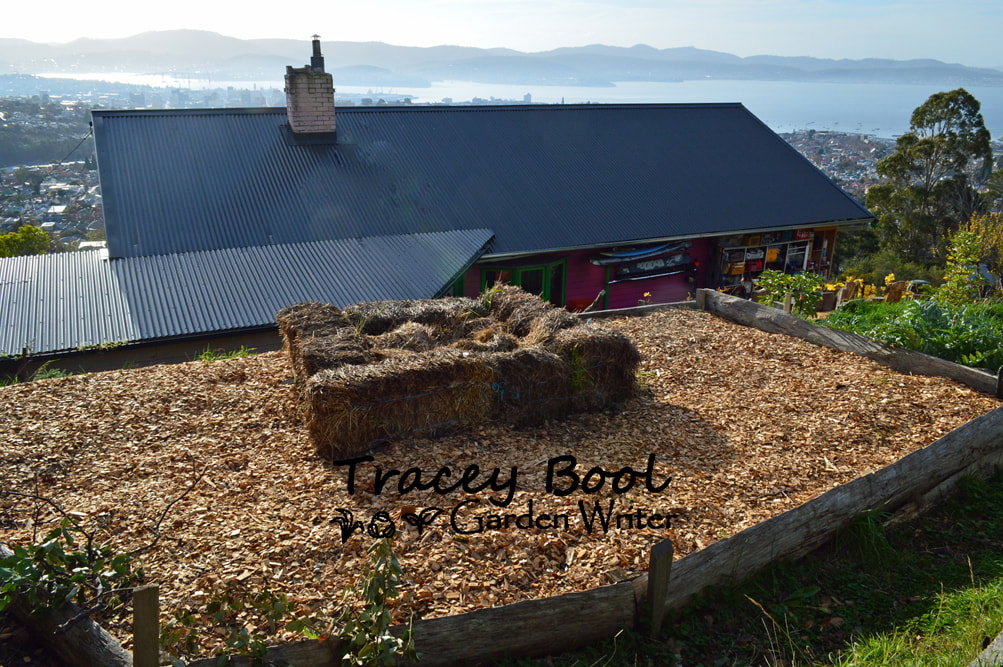|
Living the Good Life in Suburban Hobart
(26 June 2018) With an ethos of ‘community sufficiency’ and a broader view of ‘the good life’, Director of Good Life Permaculture Hannah - along with her partner Anton and their daughter Frida Maria - live on an idyllic urban property in Hobart Tasmania. The site of the permaculture landscape design and education hub is on a sunny and steep ¾ acre block with an outstanding view of the city. The block was originally half the size until the family purchased the adjacent property 1.5 years ago. The lower storey of their hot pink 1920s home is occupied with a second family, who help with garden and property maintenance. Some of the many advantages of this living arrangement is sharing the workload, pooling a variety of skill sets, engendering a sense of community, and making the most of the living space. Initial infrastructure on the neglected landscape included construction of terrace and earth beds for water management and strategic access, weed management, and building soil fertility. One savvy example is of the on-contour grey water trench which irrigates the orchard below, along with mains dripper irrigation for backup. Around 80% of the plants grown are perennial, which is a common theme in permaculture systems. There are fruiting and nut trees, berries, and ornamentals, such as the lovely Arbutus unedo (Irish Strawberry Tree), complete with a timber landing at its base. Hardier shrubs and trees are used to provide wind protection, as well as being a valuable food source. Annual veg crops are situated adjacent to the house for convenience and protection from high winds. Comfrey, Symphytum officinale, is one of Hannah’s favoured plants due to its hardiness and versatility, particularly as a soil stabiliser. There are various composting systems, including: wheelie bin humanure, small manufactured bins, and seasonal open air compost piles (various locations depending on beds being developed and for convenience). Once broken down in the bins over several months, the humanure is then used as a fertile topdressing for new garden beds. Some of the biological resources on site include chickens, top bar beehives and goats. The adorable goats, Jilly Love Face and her offspring Girty, are used for grazing and making dairy products. The volume of milk produced varies depending on the time of year; currently it is an impressive 2ltrs per day. Hannah showed me a delicious batch of goat fetta on the day of my visit. The process takes 3 to 4 hours labour and 16 hours for the finished product. Primarily vegetarians, the family supplements their diet with ethically sourced meat, such as homegrown roosters and game meat from the local butcher. There are many up-cycled objects featured at Good Life Permaculture farm, such as an ‘earthship’ style retaining wall, constructed out of old tyres; filing cabinets used as storage for root crops (easy access, well aerated, and vermin proof); a metal bed base utilised as a storage rack for harvested pumpkins; and the old sides of a cot being used as handy clothes airers. For more: http://goodlifepermaculture.com.au/ |



